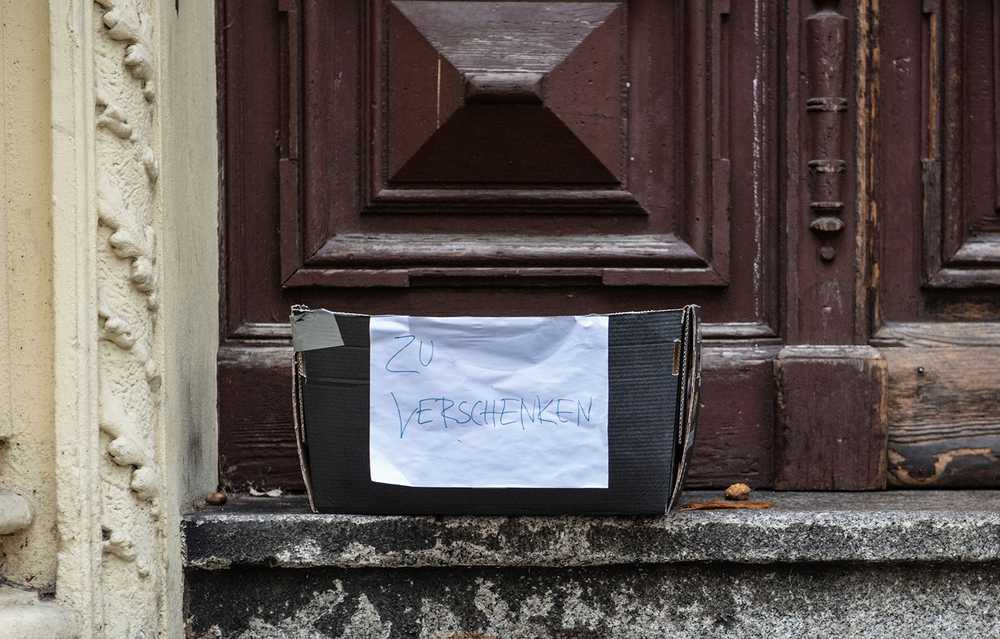Why I took the longer route to give away things for free
 Zu verschenken? (Image: tip-berlin.de)
Zu verschenken? (Image: tip-berlin.de)
I currently live in Berlin, a city where thrift culture is incredibly strong. It is one of the many reasons why I love this city. I’ve received a lot of pieces of electronics, kids clothing, and furniture for free or at very low prices. By a lot, I mean more than 30 percent of the things that are currently in my apartment came from thrifting. I’m very proud of this!
Today, when I wanted to give our Nespresso coffee machine and tea-maker machine back to the community, I did something unusual. People in Berlin usually have two options when it comes to giving things away for free:
- Put it in a box labelled Zu verschenken (to gift) and leave it on the street for a passerby to take.
- Take a photo and list it online for someone to collect it.
I’ve always felt like some Berliners are incredibly kind to go the extra mile to list things on eBay instead of taking the easier approach of leaving them on the street, but today, when faced with the same decision to make, I surprisingly chose to list our free stuff.
Why? I wondered that too.
I think it’s because I felt, intuitively, that free stuff is usually valued less than stuff that one has put in effort in obtaining. Money is one form of effort. Going to someone’s apartment to pick up is another.
Since we were giving away fully functional and quality goods, I felt responsible for making sure that we passed them to someone who would treasure and use them. I felt — again, intuitively — that this person is less likely to be found in a random passerby than a person who makes the effort to contact and collect.
True or not, I had no clue. But with some googling, the field of cognitive psychology offers something that corroborates with my intuition.
Most relevant is the finding that people are more likely to consume a product when they are aware of its costs. In a 2002 HBR article, the authors cite a study that illustrates this point very clearly:
Two friends, Mary and Bill, join the local health club and commit to one-year memberships. Bill decides on an annual payment plan — $600 at the time he signs up. Mary decides on a monthly payment plan — $50 a month. Who is more likely to work out regularly? And who is more likely to renew the membership the following year?
If you guessed Mary, you would be right. Why? Because Mary is more cognizant of the costs of keeping her gym membership each month than Bill and as a result, she is more likely to be motivated to make use of her membership to workout.
In other words, Mary is more likely than Bill to consume a product (the gym membership) as she is aware of its costs. The cost could be, instead of money, “walking to pick up the item from a stranger in Berlin.”
(As an interesting aside, that HBR article’s point of bringing up this example is to illustrate that Mary is more likely to build the habit of regularly working out compared to Bill and she is, therefore, more likely to renew her gym membership the following year. Cha-ching.)
Alright, now that I know this, I can justify the additional effort I’m putting in to list things to give away. And now I know: Berliners may be kind, but perhaps they may also know human nature better than others.
